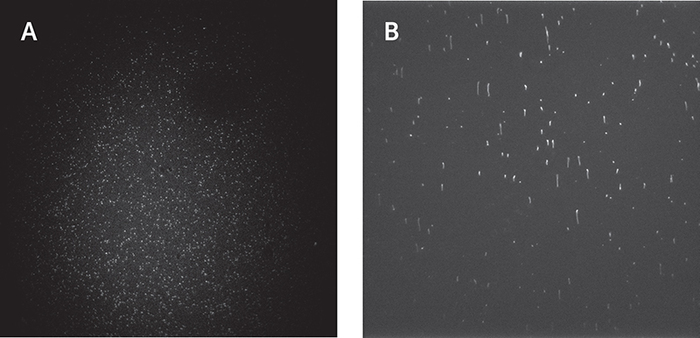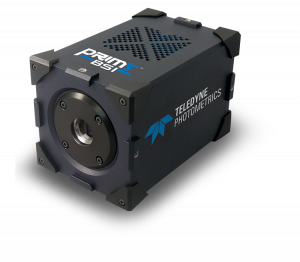Single Molecule TIRF
Dr. Biswajit Pradhan
Cees Dekker Group, Department of Bionanoscience, Kavli Institute of Nanoscience at Delft University of Technology, The Netherlands.
Background
Dr. Pradhan's research is concerned with understanding how DNA supercoils with a family of proteins called structural maintenance of chromosome (SMC) proteins.
When cells are not dividing, the chromosomes are not properly organized. However, during cell division DNA becomes organized. Just prior to cell division, following DNA replication, chromosomes condense and become tightly wound via supercoiling. Chromosomes then pair up along the center of the cell and are pulled to either side of the cell by fibers attached to the centromeres.
SMC proteins play a role in some of these events and Dr Pradhan is trying to study the interactions that occur between DNA and proteins at the single molecule level, to determine how the DNA becomes supercoiled by proteins during this process. Dr Pradhan is building a custom single molecule TIRF system to study these interactions.

Figure 1 Images of A) Single Molecules of ATOO647N and B) DNA Chains taken with the custom single molecule TIRF system using the Teledyne Photometrics Prime BSI.
Challenge
Dr Pradhan told us, "Our biggest challenge is the limited number of photons that a single molecule emits. Our molecules emit approximately 104-105 photons before they bleach so the molecules can only be observed for a limited amount of time. If we want to use lower exposure times, the excitation light intensity needs to be increased which means the molecules bleach even more quickly."
Dr Pradhan was previously using an EMCCD camera with 120-150× magnification. As a result of this high magnification and relatively small field of view of the EMCCD camera, he was not able to image a very large sample area. He has since built a new system with 60× magnification to increase the sample area. However, the larger pixel size of the EMCCD does not allow for Nyquist sampling at 60×.
The Prime BSI offers several advantages such as speed, field of view and price when compared to the EMCCD. The service at Teledyne Photometrics is also very good, I was always updated, and my questions were answered quickly, Teledyne Photometrics were really willing to help out.
Dr. Biswajit Pradhan
Solution
Dr. Pradhan is now using the Teledyne Photometrics Prime BSI back-illuminated sCMOS with his home-built single molecule system.
Dr Pradhan shared, "The Prime BSI offers several advantages such as speed, field of view and price when compared to the EMCCD." Dr Pradhan continued, "The service at Teledyne Photometrics is also very good, I was always updated, and my questions were answered quickly, Teledyne Photometrics were really willing to help out."
Dr Pradhan went on to say, "The Prime BSI has the advantage of a small pixel size, so I don't have to expand my beam. This makes the optical system much easier to work with. Without zooming I can get to the maximum resolution that I want. The high speed of the camera also really helps during my acquisitions."

Learn More About the Prime BSI
Download This Customer Story